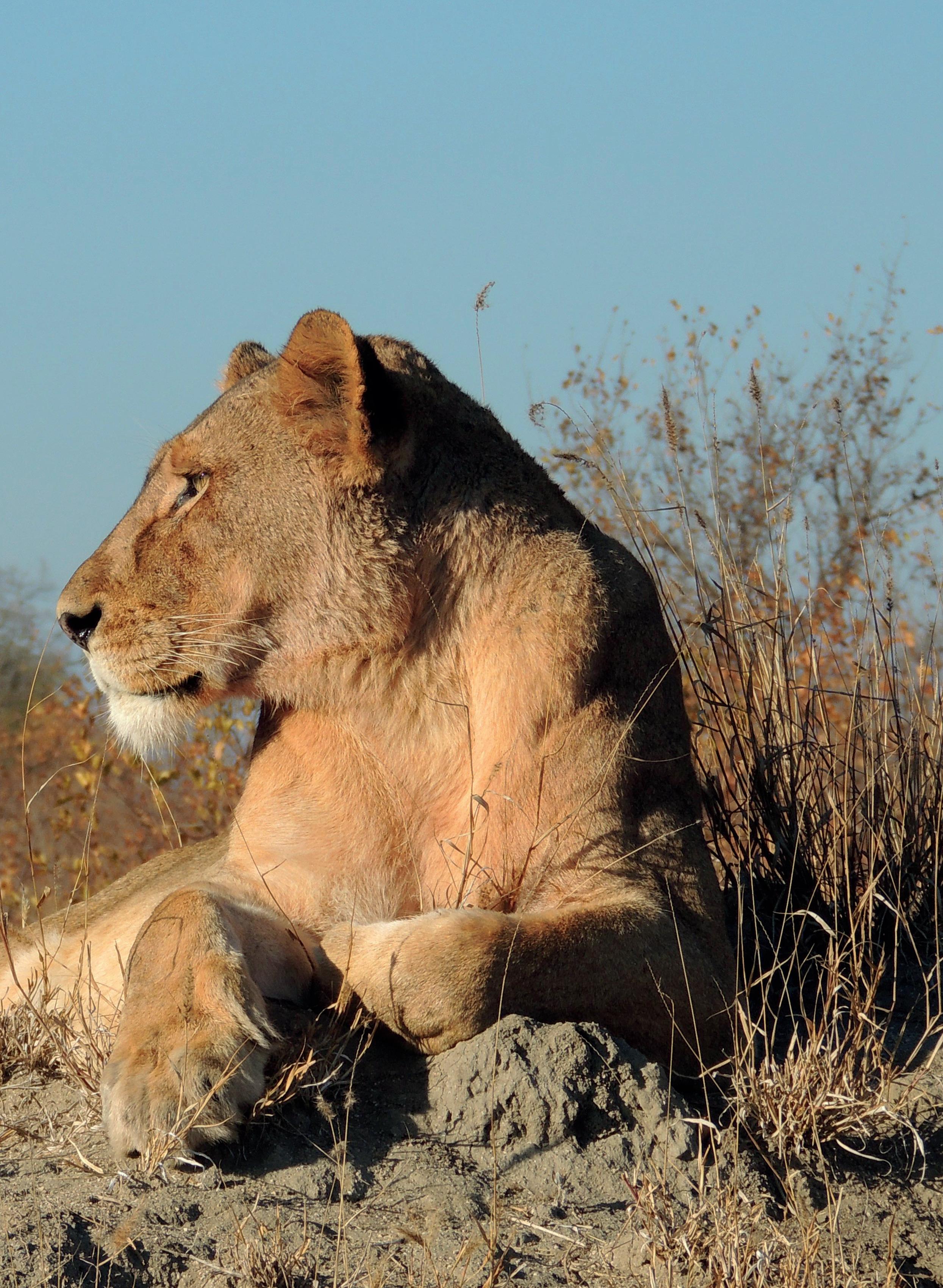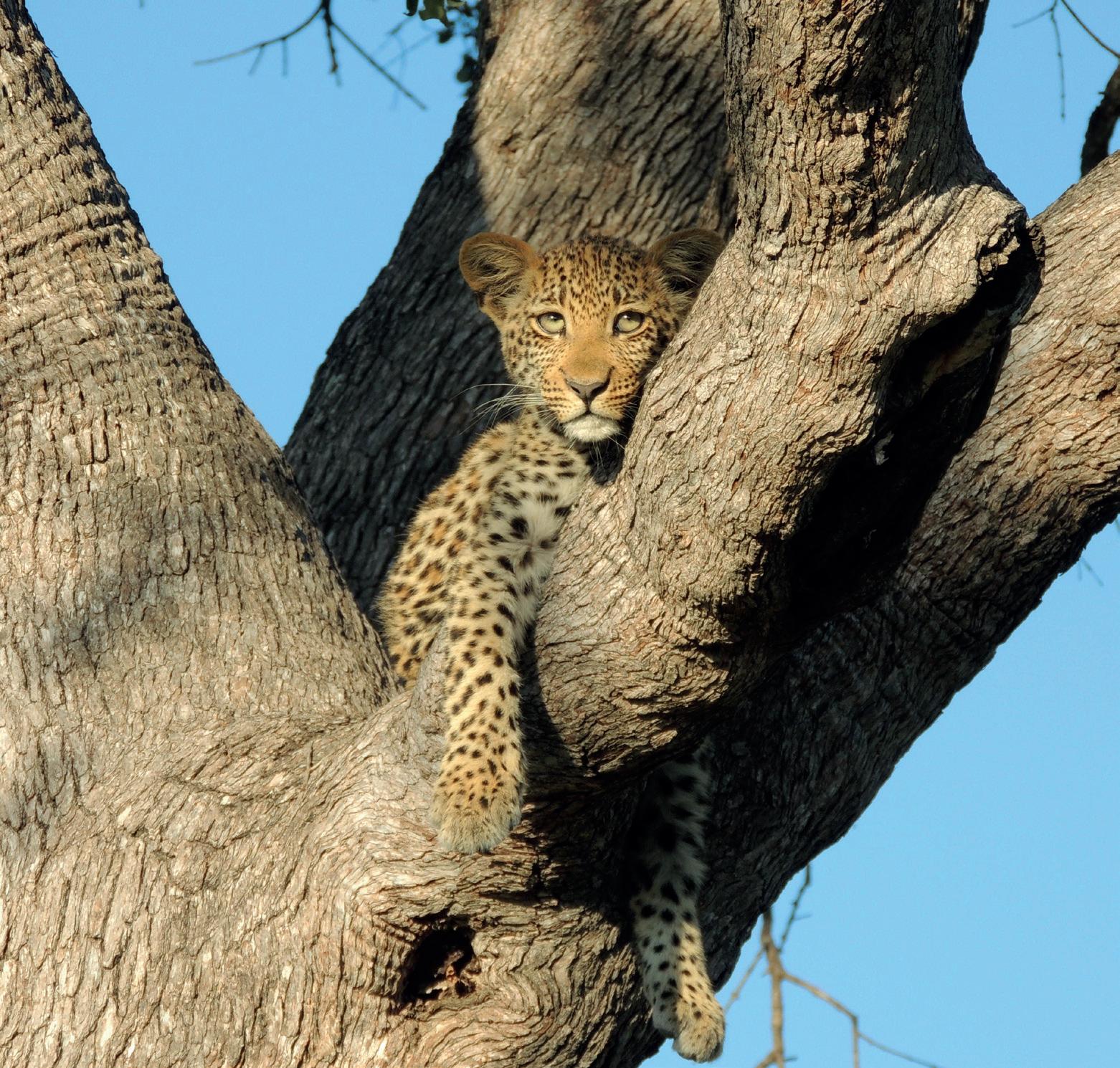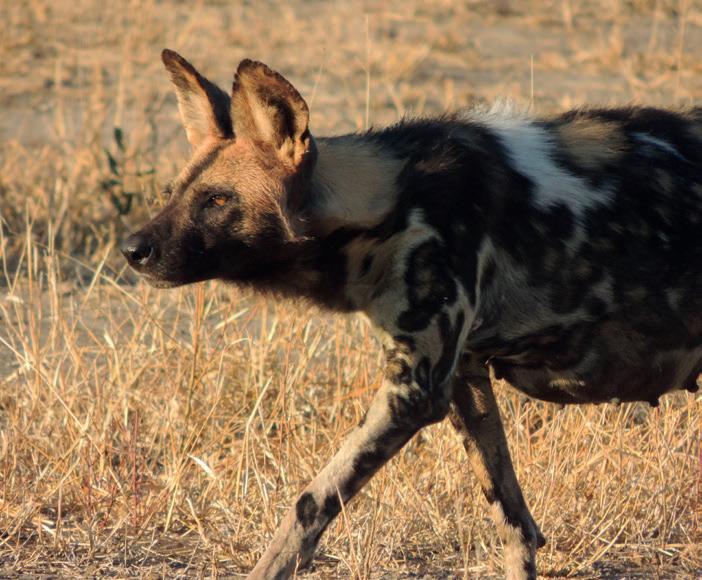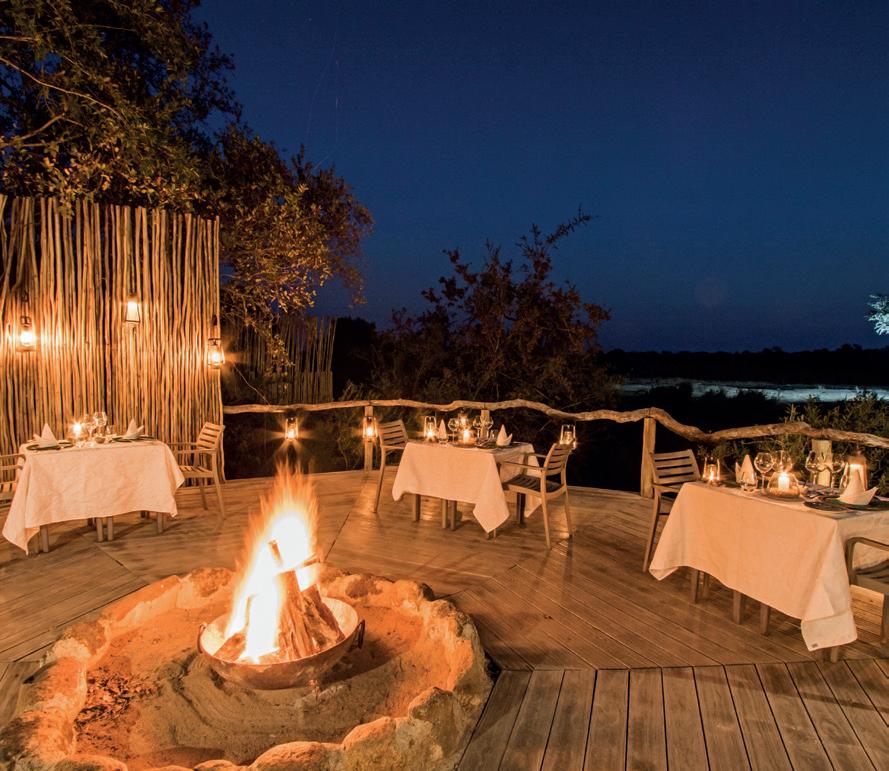
8 minute read
Backstage on Safari
WORDS BY SAFARI SPECIALIST AMELIA HENDERSON
Mother’s pride A lioness looks out over Sabi Sands in South Africa, as taken by Africa specialist Amelia
Advertisement

Amelia spent part of her recent sabbatical working at a luxury lodge in South Africa’s Sabi Sand Wildtuin reserve. Here, the safari specialist shares her experiences and explains why she finds the area so special.
The big four A mother elephant takes her young herd for a wander through the bushveld

The sound of helmeted guineafowl squabbling outside my window woke me up. I was staying at Simbambili Game Lodge, in South Africa’s Sabi Sand Wiltuin reserve bordering the Kruger. However, instead of waking up in one of the lodge’s nine plush suites, I was starting my day in the staff quarters, which were still much more comfortable than I was expecting. What lay ahead didn’t involve game drives, bush walks or an afternoon idling by my own plunge pool. Instead, I’d be greeting new guests, listening to the excitable chatter of people returning from their game drives, and making sure everything, from the rooms to the food, was up to scratch. But I was here, in South Africa, my happy place.
My roots in South Africa stretch back almost a decade to when my family moved to Johannesburg for my father’s job.
I fell in love with the place as soon as I arrived. Every time I visited, we would always find something new and different to do, whether it was a safari, beach time on Durban’s coast or a city break in Cape Town or Johannesburg itself (in my opinion, an underrated city).
As an Audley specialist, I returned to explore, and when I was given the chance to take a three-month sabbatical, I knew exactly where I wanted to spend the time. After a few weeks traveling around South Africa to visit new areas, I arrived at Simbambili Game Lodge for my five-week stint as a member of its front-of-house team.
With its nine suites, each with a veranda facing a dry riverbed frequently visited by elephant, an in-house spa therapist and cozy common areas, the lodge is a luxurious option for a safari. However, I soon realized just how much goes on behind the scenes. The lodge itself is run by husband and wife team, Tania and Mike, who have lived

and worked there for 16 years. From the moment you walk in they make you feel welcome, along with the rest of their staff, from the rangers to the scullery workers.
A TYPICAL WORKING DAY While each day was different in its own way, I soon slotted into a daily routine. I would wake just after guests had headed off on their early morning game drive or bush walk, and gather with the rest of the staff for a run through of the day – who was arriving, who was leaving, any special requests guests might have. I’d then prepare documentation for guests checking in and out before ensuring each suite was up to standard for our new arrivals.
Then it was my favorite part: hearing about what people had seen on their morning activities. Their excitement at seeing a leopard or elephant or lion, or




Spotted in the trees The leopard in Sabi Sands are comfortable around vehicles; (below) a wild dog

I became acquainted with a mother leopard and her cub, which was just six months old when I first encountered them. As I continued to bump into them on my drives, I was able to watch the cub grow and look more closely at the way they formed a bond. I still check for updates on the cub’s progress via the lodge’s Instagram feed.
I also had some fantastic wild dog sightings – a species that’s difficult to see on safari elsewhere due to their dwindling numbers and wide range of movement. You know it’s special when you can see the excitement in your guide’s face upon hearing ‘wild dog’ over the radio. Then adrenaline kicks in as you hurry to where the pack was last sighted, hoping it hasn’t moved on.
Luckily for me, a pack of 18, complete with pups, were busy feeding on their latest prey: an unfortunate impala. We watched the gruesome scene for a while, and I was suddenly glad I hadn’t witnessed the kill.
Room with a view Watching elephant from the lodge
even a bird they had always wanted to spot, was infectious.
Most of my morning involved checking in our new guests, showing them around the lodge, and saying goodbye to others (many of whom vowed to return.) I would usually have a bit of time to relax while the guests were on their afternoon game drive. I read a lot of books during my time there (the lodge has its own library), but the best entertainment was found outside. From the lounge I was able to sit and watch over the waterhole. Elephant visited every day for a mud bath, I spotted a leopard drinking from it a couple of times, and one

day I watched as four lion bounded over to quench their thirst.
Next, thoughts would turn to dinner. Sometimes we’d surprise guests with a candlelit meal in the middle of the bush, which I’d help set up, waiting in anticipation for them to appear. Or, if they were dining back at the lodge, I’d join them by the roaring fire. The best nights were when the guests bonded over their shared experiences. The air rang with the sound of laughter and stories brought to life in exaggerated voices – the same stories they’d be telling their friends and family back home.

OUT IN THE BUSH It wasn’t all work, though. Every few days I was able to join game drives, and I had some of the best wildlife sightings ever.
Sabi Sands is home to all the Big Five, but it’s particularly known for its leopard population – you’re likely to see one on most days. Sightings of leopard here are different to anywhere else because they’re so comfortable with vehicles; sometimes they get so close you feel you could almost reach out and touch them – although I’d strongly advise against it!
There were slightly fluffier sightings, too. One that stuck with me was when I was on a game drive with a family desperate to see giraffe – an animal I’d seen many times before. When we finally tracked one down, they were so excited. I suddenly saw the giraffe through their eyes and I thought, ‘Yes, being so close to the world’s tallest animal is amazing.’ All in all, I was left feeling that Sabi Sands is one of the best safari destinations in the country, if not the continent. It’s private, so only people staying in the reserve’s camps and lodges can do game drives there, so sightings don’t get congested. It has all the headline animals any first-time safari goer would want to see – in one game drive you’ve a good chance of encountering three, four or even all the Big Five. Plus, the intimacy of sightings sets it apart for more seasoned safari enthusiasts.
Under African skies Enjoy dinner with a touch of stargazing

HEADING HOME Time seemed to pass both slowly and within a blink of an eye, and soon my time at Simbambili came to an end. It was difficult saying goodbye – both to the people who’d become friends, and to Sabi Sands, its familiar dry landscape scattered with bushes and brimming with wildlife.
Now back home, I miss being interrupted in the office by elephant passing through the camp (an unlikely occurrence in London). I miss the dramatic sunrises and sunsets blasting the sky with deep oranges, hazy pinks and streaks of lilac. But mostly, I miss falling asleep to the whoops of hyena and waking to the calls of helmeted guinea fowl.
What I’ve taken with me from the experience is a renewed love of the bush, and I know that if someone asked me what kind of vacation I’d like to go on, my answer now – and probably always – would be a safari.

TRAVEL ESSENTIALS Flight information: Flights from Boston to Cape Town via Paris take 18.5 hours. Domestic flights from Cape Town to Kruger’s private game reserves take around 2.5 hours. When to go: Game viewing is excellent year-round, but we particularly recommend June to October, when the dry landscape makes it easier to see wildlife. Get me there: A 9-day tailor-made trip to South Africa, including international and domestic flights, time in Cape Town and a safari in Sabi Sand Wildtuin, starts from $5,559pp. For more information, call our South Africa safari specialists on 1-855-655-7803.
AMELIA’S TIPS FOR A SABI SAND WILTUIN SAFARI
• Stay for four nights rather than three. Most of the guests I spoke to wished they’d stayed an extra day. It makes you feel that bit more relaxed and immersed in the bush.
• Be prepared for animals to wander through camp – you’re in their territory. Staff will make sure you’re safe by escorting you to and from your room when it’s dark.
• Take a pair of binoculars. They’re especially handy for seeing Sabi Sands’ 300 bird species up close.
• Try some South African food. Simbambili and many other lodges regularly host braai (South African barbecue) nights around the boma (campfire).










